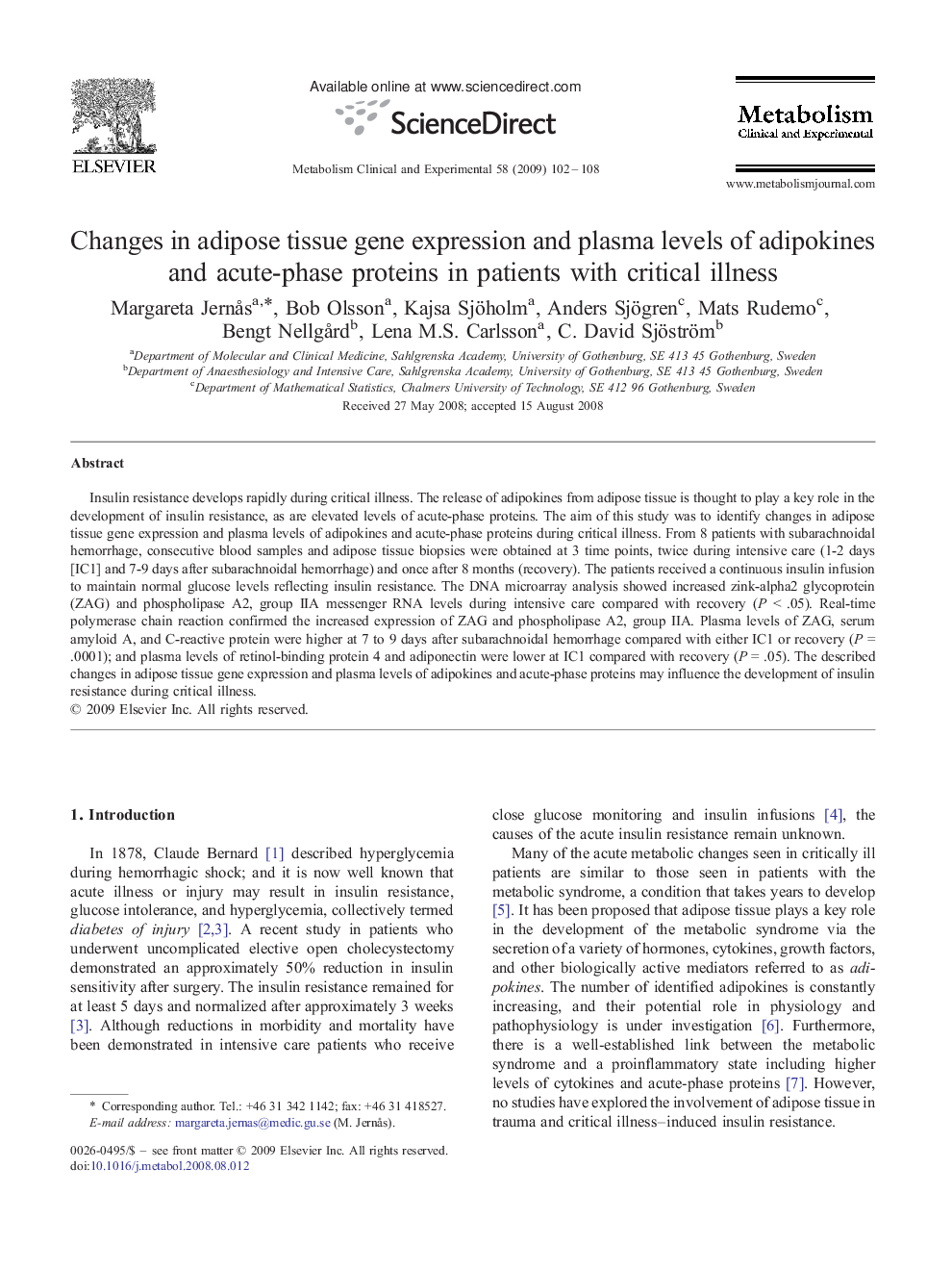| Article ID | Journal | Published Year | Pages | File Type |
|---|---|---|---|---|
| 2806163 | Metabolism | 2009 | 7 Pages |
Insulin resistance develops rapidly during critical illness. The release of adipokines from adipose tissue is thought to play a key role in the development of insulin resistance, as are elevated levels of acute-phase proteins. The aim of this study was to identify changes in adipose tissue gene expression and plasma levels of adipokines and acute-phase proteins during critical illness. From 8 patients with subarachnoidal hemorrhage, consecutive blood samples and adipose tissue biopsies were obtained at 3 time points, twice during intensive care (1-2 days [IC1] and 7-9 days after subarachnoidal hemorrhage) and once after 8 months (recovery). The patients received a continuous insulin infusion to maintain normal glucose levels reflecting insulin resistance. The DNA microarray analysis showed increased zink-alpha2 glycoprotein (ZAG) and phospholipase A2, group IIA messenger RNA levels during intensive care compared with recovery (P < .05). Real-time polymerase chain reaction confirmed the increased expression of ZAG and phospholipase A2, group IIA. Plasma levels of ZAG, serum amyloid A, and C-reactive protein were higher at 7 to 9 days after subarachnoidal hemorrhage compared with either IC1 or recovery (P = .0001); and plasma levels of retinol-binding protein 4 and adiponectin were lower at IC1 compared with recovery (P = .05). The described changes in adipose tissue gene expression and plasma levels of adipokines and acute-phase proteins may influence the development of insulin resistance during critical illness.
